Newspapers as Markets
James Curran and Jean Seaton have argued that the industrialization of print press and newspapers have led to the concentration of ownership. Many types newspapers (tabloid, or broadsheet) are integrated in few large companies that are owned by supremely wealthy entrepreneurs (Horizontal, vertical and cross-sector forms of intergration). These gigantic forms of media ownership are cost-effective and threaten the plurality of media.
For example radical press ceased to exist whereas small scale, regional, independent newspapers are either integrated or vanish. Newspapers have come business that derive profit from targeting specific demographic of audiences (for example wealthy, upper, middle and low middle class readers/buyers). This has largely influenced press content, image and style.
For example tabloid newspapers follow ‘hysterical news values‘. Sensationalist language and overly dramatic, urgent and contrarian forms expression dominate their coverage of political and social news. Advertisement holds large slice of pages’ space. Politics are replaced by soft news, entertainment, gossip and celebrity stories. Quite often person-centric narratives (personalization/role-models, celebrities, stars and lately ‘influencers’) replace general cultural analysis.
Finally, the ‘ideological’ content becomes formulaic favouring stereotypical views on morality, politics, economy, immigration and national values.
Can you discern any of the above in the print copies of the Daily Mail?
Does the Media act in the ‘Public Sphere’ in the ‘Public Interest’?
There are 2 key historical moments that are worth (briefly) considering. 1. Emergence of the Printing press (Gutenberg 1440) and 2. the Emergence of the Radical Press in the UK after Peterloo.
“The Peterloo massacre has become a battle honour for the left, its memory played out in a thousand mass meetings, in a direct line from August 1819 to Jeremy Corbyn’s campaign rallies today.”
– The Guardian Jan 2018
The Transformation of the Public Sphere
It is argued that “a public space between the private domain and the state in which public opionion was formed and ‘popular’ supervision of government was established”
(p. 82: 1996)
Task : Wider Reading
Look at the following extracts and note 2-3 bullet points for each extract that shows your understanding of ‘the public sphere‘ and the media as watchdog. Focus on what these terms mean and how did they emerge and develop. For example, in the extract: Mass Media and Democracy by James Curran there is a focus on Jurgen Habermas and his concept of the ‘Public Sphere‘, basically arguing that the developments in education and the mass media allowed for a greater access to information particularly with regard to government, authority and the exercise of control. Similarly, Denis McQuail aruges for a media that specifically works in the public interest and not in a purely commercial interest.

The Liberal Theory of Press Freedom is explained by James Curran and critiqued.
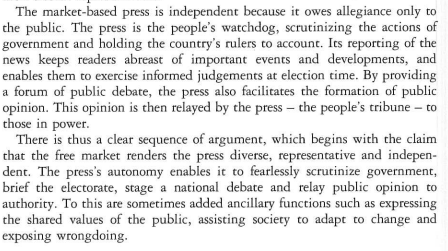
This ideal of press freedom in Britain was critiqued by state sponsored press commissions
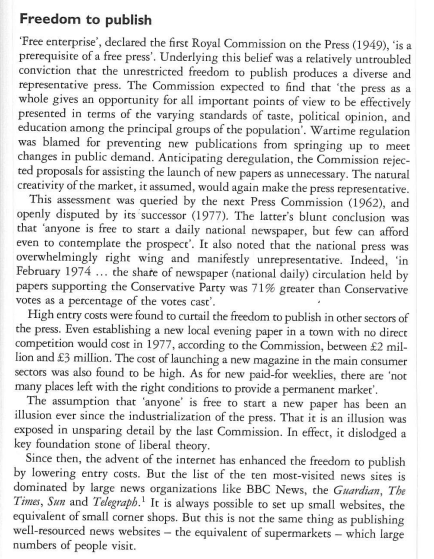
So if the a deregulated market cannot guarantee ‘free’ and socially responsible press what is to be done?
How can we ‘regulate’ the press?
Livingstone and Lunt identified two general models of regulation, one based on the ‘consumers’ and one based on ‘citizens’.
There are the features of consumer-based regulation
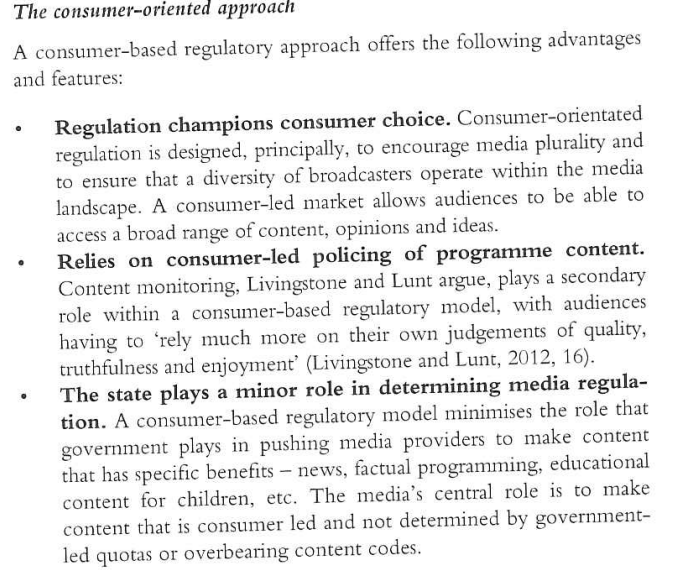
and here comes the features of the citizen-based regulation
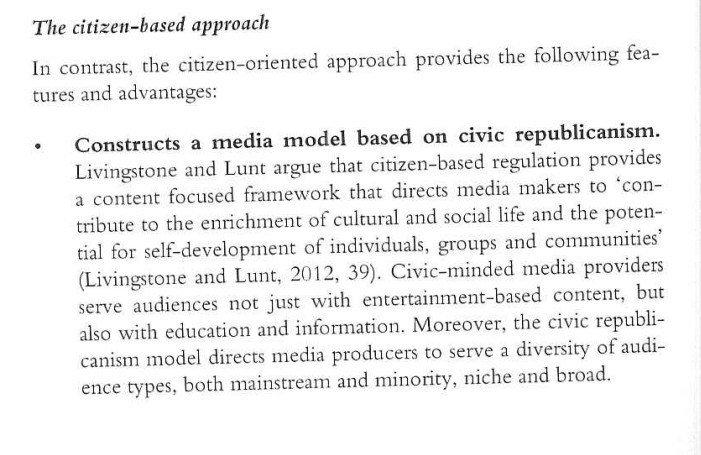
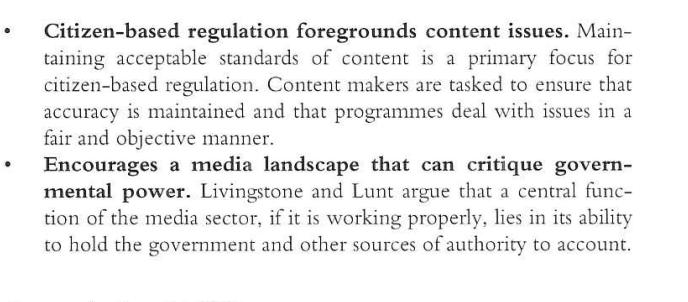
Mass Media in the Public Interest (Denis McQuail)
Mass Media and Democracy (James Curran) in the Public Service.
This links to the main proposition that we faced earlier in the academic year which was: in what ways are the culture industries different from other industries? Which was put forward in this extract from this opening chapter Culture Communication & Political Economy by Golding and Murdock from Mass Media and Society by James Curran and Michael Gurevitch,
A good starting point is to read this summary of James Curran and Jean Seaton’s work found on page 121 of the AQA Media Studies text book (Hendry & Stevenson), that highlights their 1997 book: Power without Responsibility (James Curran and Jean Seaton) .
“shows how different ways of financing and organising cultural production have traceable consequences for the range of discourses and representations in the public domain”
(p.11: 1996)
For further reading and more in depth reflection look at this chapter from Brian McNair’s book Introduction to Political Communication (2011)

